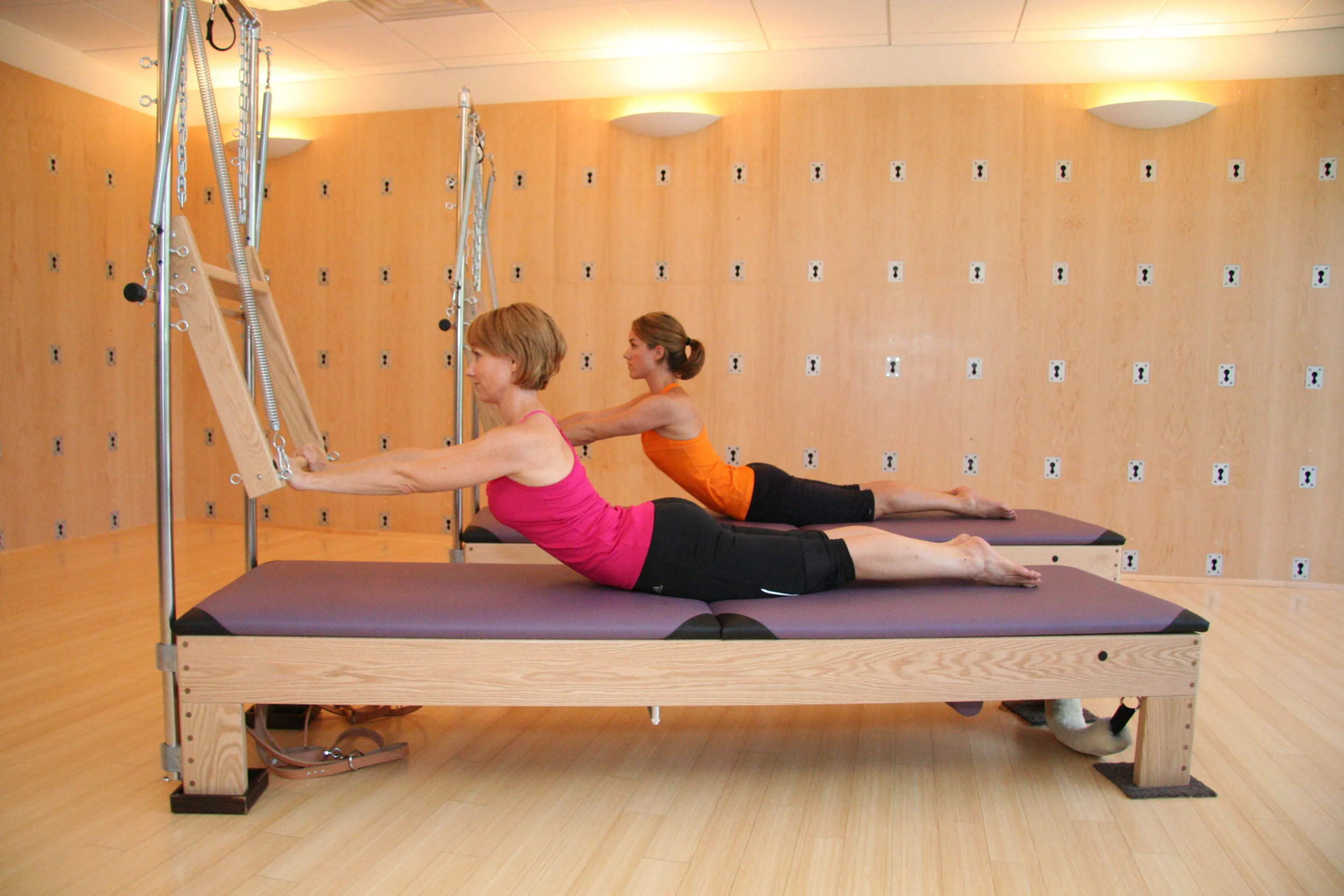In this video, Shoshana will show you set up and techniques for the some of the essential exercises in the classical intermediate Pilates mat order.
The basics of a beginners Pilates mat workout
In this video, Shoshana reviews a sampling of Pilates Mat exercises that would typically be appropriate for those new to Pilates.
Those pesky knees
by Shoshana Goldstein
In 2013, I learned the hard way about this delicate joint when I tore the meniscus in my right knee during a ski accident. Not long after, 60% of my meniscus was removed in surgery. Since the meniscus acts as the shock absorber in one's knee, this meant I would now have hardly any cushion in my right knee!
The orthopedic surgeon told me that recovery would be slow and that I would also probably need a knee replacement when I was older - to which I said 'heck no!' I was sure that with Pilates I could not only fully recover, but could do so quickly and also have a sustainable & joint-safe form of exercise for the long term.
And that's exactly what has happened.
Within 12 months of the accident, I was fully recovered and back to swooshing down the slopes.
General guidelines and modifications
Here are some general modifications and guidelines for a mat or reformer Pilates workout for this situation. This information comes from both my own experience along with insights from my mentor and master Pilates instructor Shari Berkowitz - see www.theverticalworkshop.com.
PLEASE realize that these general guidelines are not a prescription. If you've had knee surgery, it's essential that you work with a skilled practitioner (i.e. a Physical Therapist or an experienced Pilates instructor) both during the acute phase of rehab and subsequently when restoring full functionality.
1. One of the key things about knee rehab is that every repetition needs to be pain free. We work around the injury in order to avoid pain and focus on the strong parts of the body to support the knee joint.
2. Set your feet a hip socket width apart and parallel so that the middle of your knee is inline with the second toe joint of your foot. This provides good ankle, knee and hip tracking.
3. Reduce the range of motion when in knee flexion to avoid pain. For example:
A. On the reformer set the foot bar at a lower setting or move the gear bar for a longer carriage.
B. While doing a Mat exercise like Single Leg Stretch, use your hands to block your knee so that the knee stops directly over the hip.
4. When doing mat work that involves repetitive knee flexion with 'hand' pulling - like in Single Leg Kick or Rolling Like A Ball - place hands behind the knees or at the back of your leg. Omitting the arm portion of the exercise is also a possibility. Just reach your arms long at hip bone level. Likewise, you can do just the arm and torso portion of an exercise and omit legs.
5. Eliminate exercises that involve being on your stomach (prone) while flexing the knees like in hamstring curls on the reformer or Single and Double Leg Kicks on the mat. These exercises may put too much pressure on the knee and make it difficult for proper tracking.
6. When setting up for Shoulder Bridge Preparation, set your feet further away from your hips so that there is less knee flexion or omit.
7. Kneeling exercises likely need to be eliminated.
8. You might have to omit exercises with legs in straps whether on the reformer or tower. Straps do not provide much stability for the knees
9. Lower the amount of weight from the springs for any work with feet on the reformer’s foot bar or foot pedal. The pull from the springs can be compressive.
Pilates Reformer - Foot Work Series
In this video, Shoshana reviews the Foot Work Series on the Reformer. This sequence strengthens the legs while challenging the heart and lungs. The effort of the legs warms up the body while helping to focus the mind. Springs: 3 to 4
Pilates Reformer - The Hundred
In this video, Shoshana reviews the Hundred on the Reformer. This exercise warms up the heart and lungs, and focuses the mind preparing it for exercise. It strengthens the abdominals, shoulder girdle and hip flexors. The brisk movement of the arms gets the cardiovascular system going. Springs: 3 to 4


